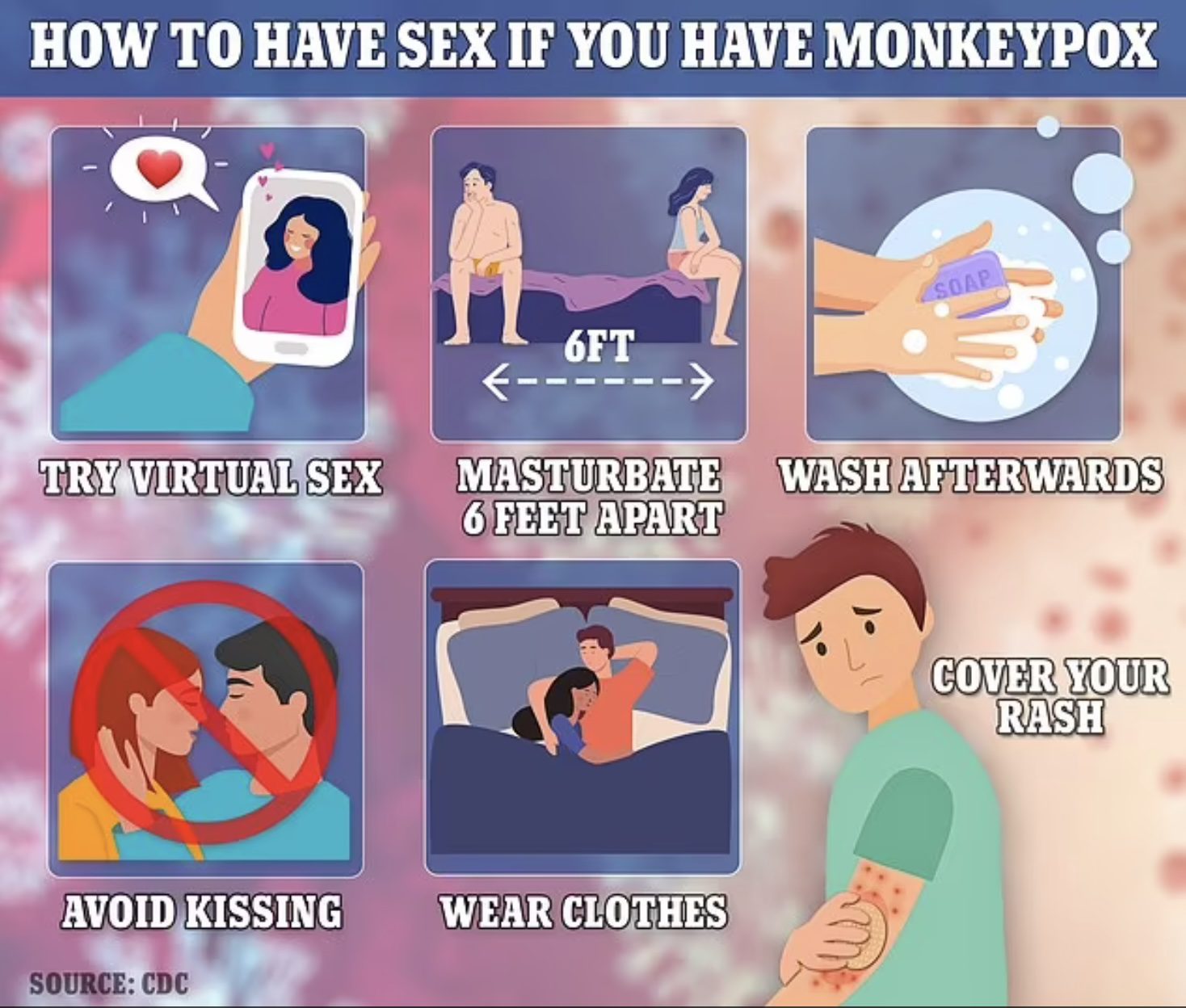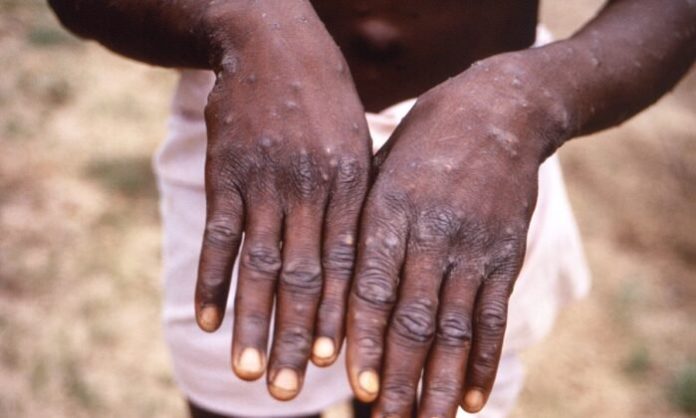Early this month, the U.S. Centers for Disease Control and Prevention (CDC) issued bizarre sexual guidance for Americans infected with monkeypox.
The CDC issued a list of safe sexual activities for sexually active patients to follow. Among the recommendations are to ‘masturbate together at a distance of at least 6 feet’ or ‘consider covering areas where rash or sores are present when having sex.’
Read the bizarre checklist of sexual activities from the CDC below:
How can a person lower their risk during sex?
Talk to your partner about any recent illness and be aware of new or unexplained sores or rashes on your body or your partner’s body, including the genitals and anus. If you or your partner have recently been sick, currently feel sick, or have a new or an unexplained rash or sores, do not have sex and see a healthcare provider. This is always a good plan, even if monkeypox isn’t in your area.
If you or a partner has monkeypox, the best way to protect yourself and others is to not have sex of any kind (oral, anal, vaginal) and not kiss or touch each other’s bodies while you are sick, especially any rash or sores. Do not share things like towels, fetish gear, sex toys, and toothbrushes.
If you or your partner have (or think you might have) monkeypox and you decide to have sex, consider the following to reduce the chance of spreading the virus:
- Have virtual sex with no in-person contact.
- Masturbate together at a distance of at least 6 feet, without touching each other and without touching any rash or sores.
- Consider having sex with your clothes on or covering areas where rash or sores are present, reducing as much skin-to-skin contact as possible.
- Avoid kissing.
- Remember to wash your hands, fetish gear, sex toys and any fabrics (bedding, towels, clothing) after having sex.
- Limit your number of partners to avoid opportunities for monkeypox to spread.
What should a person do if they have a new or unexplained rash, sores, or other symptoms?
- Avoid sex or being intimate with anyone until you have been checked out by a healthcare provider. If you don’t have a provider or health insurance, visit a public health clinic near you.
- When you see a healthcare provider, remind them that this virus is circulating in the area.
- Avoid gatherings, especially if they involve close, personal, skin-to-skin contact.
- Think about the people you have had close, personal, or sexual contact within the last 21 days, including people you met through dating apps. You might be asked to share this information if you have received a monkeypox diagnosis, to help stop the spread.

Screengrab Courtesy of Daily Mail
The U.S. has 72 reported cases of monkeypox in at least 18 states according to NBC.
A monkeypox outbreak that has resulted in hundreds of cases in more than 20 countries prompted the CDC to move its travel advisory from ‘Level 1’ to ‘Level 2’ last May.
‘Level 2’ alert advises people to practice enhanced precautions, such as avoiding sick people, including those with skin lesions.
The CDC advised travelers to avoid contact with dead or live wild animals, including monkeys and rodents.
Travelers should also avoid eating bushmeat (wild game).
It can be recalled that CDC removed the mask guidance from its monkeypox travel notice less than one week after they initiated the policy due to backlash.
“Late yesterday, CDC removed the mask recommendation from the monkeypox Travel Health Notice because it caused confusion,” a CDC spokesperson claimed.
Then on Tuesday, CDC released new guidance about how to identify the virus based on symptoms.
“Descriptions of classic monkeypox disease describe a prodrome including fever, lymphadenopathy, headache, and muscle aches followed by development of a characteristic rash culminating in firm, deep-seated, well-circumscribed and sometimes umbilicated lesions. The rash usually starts on the face or in the oral cavity and progresses through several synchronized stages on each affected area and concentrates on the face and extremities, including lesions on the palms and soles.” the CDC said in its guidance.
“Thus far in the U.S. outbreak, all patients diagnosed with monkeypox in the United States have experienced a rash or enanthem. Although the characteristic firm, deep-seated, well-circumscribed and sometimes umbilicated rash has been observed, the rash has often begun in mucosal areas (e.g., genital, perianal, oral mucosa) and in some patients, the lesions have been scattered or localized to a specific body site rather than diffuse and have not involved the face or extremities. In some instances, patients have presented with symptoms such as anorectal pain, tenesmus, and rectal bleeding which upon physical examination, have been found to be associated with visible perianal vesicular, pustular, or ulcerative skin lesions and proctitis. The lesions have sometimes been in different stages of progression on a specific anatomic site (e.g., vesicles and pustules existing side-by-side), In addition, prodromal symptoms including fever, malaise, headache, and lymphadenopathy have not always occurred before the rash if they have occurred at all.” the CDC said.


